
The ICTY ‘residual mechanism’ has again rejected the application by General Radislav Krstic for early release on the grounds of his failing health. The wartime Drina Corps commander has served 30 years of a 35-year sentence for aiding and abetting genocide in Srebrenica

This is the conclusion of Judge Graciela Gatti Santana, President of the ICTY Residual Mechanism:
V. CONCLUSION
75. Although Krstić is eligible to be considered for early release, I am of the opinion that the Application should be denied. The high gravity of his crimes strongly militates against granting him early release and, the graver the criminal conduct in question, the more compelling a demonstration of rehabilitation should be. 141 I welcome the fact that Krstić has made positive progress, and consider that his public acknowledgement that genocide occurred in Srebrenica and that he participated in it reflects a level of rehabilitation and is of considerable significance given the rise of historical revisionism and genocide denial in the region. However, I am not yet persuaded that he has demonstrated sufficient rehabilitation to reach this heightened threshold. Further, there is no evidence before me that demonstrates the existence of compelling humanitarian grounds which would warrant overriding this negative assessment.
Now a frail, 76 year old amputee suffering from depression and PTSD, he faces the real prospect of dying in prison. His experience of what passes as justice at the ICTY has been horrendous – inhumane and shameful from the outset.
It all began in 1998 with his dramatic capture and kidnap to the Hague in a joint NATO/SFOR operation using British and U.S. forces. Rubber bullets were fired at his car, he was then dragged out of its window 500 metres to a waiting helicopter, losing his prosthetic leg in the process.
In 2004 Krstić was found guilty of genocide and gaoled for 46 years – the longest sentence ever imposed by ICTY on a man who had only arrived in Srebrenica, straight from hospital, on the day of the Serb take over.
The tribunal accepted he didn’t kill anyone himself but knew what was happening, wanted it to happen and helped it happen. The appeal finding was he didn’t have the intent required by law but was still guilty of aiding and abetting genocide. His sentence was reduced to 35 years.
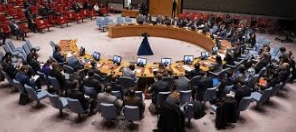
For years Krstic continued to protest his innocence but he was up against a politically inspired, illegal court set up specifically by the Americans to punish its enemies. Although the U.N. Security Council had laid down strict instructions for the ICTY to enforce only existing international law these were completely ignored. The ICTY rapidly became a law unto itself. One prosecutor boasted the tribunal had created more jurisprudence in 5 years than had been created in the previous 500.
Krstic was a victim of the highly elastic new crime known as ‘Joint Criminal Enterprise’ – Hague prosecutors joked that JCE stood for Just Convict Everyone – contrived to entrench the propaganda message that Serbs were the sole aggressors in the Balkan wars and everyone else innocent victims. Evidence of crimes against Serbs was routinely suppressed as irrelevant by ICTY judges. But in the case of Srebrenica such evidence could not have been more relevant. Violence does not happen in a vacuum and it’s vital to understand the context.
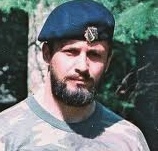
Nominally Srebrenica was a U.N. safe area for Muslims, but it had not been demilitarised and was bristling with weapons. It was occupied by 6,000 soldiers of the 28th infantry Division of the Bosnian Muslim army whose brutal commander, Naser Oric, used it as a base for launching regular murderous raids on the surrounding Serb villages. Oric massacred thousands of Serbs, torching their homes and destroying their crops. No fewer than 192 villages suffered this fate in the three years up to the fall of Srebrenica.
Passions were running high and a future bloodbath was widely predicted because Serb soldiers all belonged to local communities that had been terrorised and traumatised by years of Muslim aggression long before General Mladic led his small force of 200 men into the town on July 11.
On arrival the Serbs were amazed to find the place had been abandoned by the 28th Division, leaving behind only only women, children and the elderly. They took the town without firing a shot.
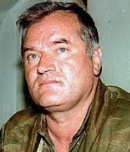
Mladic promptly set about making arrangements to evacuate some 25,000 Muslim civilians to safety in Tuzla – an act hard to reconcile with genocidal intent. On the same day General Krstic arrived in Srebrenica straight from a two-week stay in hospital for urgent treatment to his wounded leg.
In the course of the next few days there were numerous reports of bloody skirmishes, firefights and ambushes. There were also isolated incidents of killings and a large number of men are known to have died in unmarked minefields en route to Tuzla. But the overwhelming majority of the deaths in Srebrenica were in the course of regular military combat – a consequence of war not genocide.
It is undisputed that over 90% of those who died were soldiers or men of military age,16-60, who had already been drafted. The 15,000 strong Muslim column marching to Tuzla were all legitimate military targets. They weren’t civilians but soldiers who are not protected by the Genocide Convention.
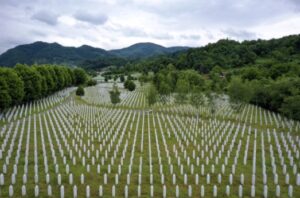
Thirty years on there is still no substantive evidence for the claim, repeated ad nauseam, that 8,000 Muslim-men and boys were massacred in cold blood. It remains a myth because the figures simply don’t add up. The U.N.’s own final estimated death toll from Srebrenica was around 3,000. Bosnian and Serb Army estimates both agreed a total of around 2,000 were killed in combat. The ICTY itself could never agree a figure because it never saw fit to conduct a professional investigation into what happened on the ground. It relied almost entirely on witness testimony, mostly provided anonymously by video link. Studies show that over 90% of evidence produced was hearsay. Hard factual evidence was conspicuous by its absence.
General Krstić has served most of his sentence in the UK. He transferred here in 2004. Within a year his beloved wife died and this loss, combined with his continuing sense of injustice, led to serious mental health problems.

In 2010 he was moved to Wakefield Prison where his throat was slashed by three Muslim inmates and he nearly died. All three were given life sentences for attempted murder. In 2015 Krstic won a case against the Ministry of Justice and the Prison Authorities for failing to prevent the attack. The judge found that the MoJ had “ failed in its legal duty of care …the attack of 7 May 2010 could and should have been avoided”. Krstić was awarded £35,000 compensation.
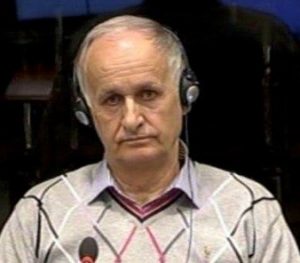
General Krstic, has now served the equivalent of a life sentence for a crime he didn’t commit. His first appeal for early release at the beginning of 2024 was refused but within days the ICTY pressured him into making a ‘confession’ to demonstrate repentance of his crime. It was a cruel and opportunistic exploitation of his age, frailty and mental state. And yet even this submission to duress for the obvious reasons of self preservation wasn’t enough to qualify him for early release. Pressuring prisoners to confess or plea bargain in return for better treatment is now rightly categorised by the U.N. as a form of torture. It has no place in a civilised society.
If the ICTY residual mechanism retains any shred of humanity or compassion now is surely the time to stop torturing a frail old man and temper its so called justice with a little mercy.